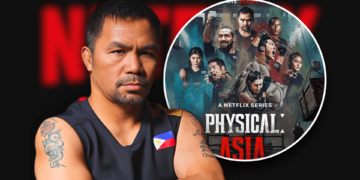Netflix’s recent feature of Erwan Heussaff, a Filipino-French content creator, as a guest on the show Somebody Feed Phil has triggered significant controversy among Filipino netizens.
The streaming platform’s decision to position Heussaff, a prominent food vlogger and entrepreneur, as a key advocate for Filipino cuisine in the episode sparked accusations of cultural misrepresentation and insensitivity.
This backlash highlights complex issues surrounding authenticity, representation, and the authority to define cultural heritage in a global media landscape.
Filipino cuisine, a vibrant fusion of indigenous, Spanish, Chinese, Malay, and American influences, is a powerful symbol of national pride and historical resilience. Iconic dishes like adobo, sinigang, and lechon embody regional diversity and centuries of cultural exchange.
Against this rich backdrop, Netflix’s choice to showcase Heussaff on Somebody Feed Phil, a series where host Phil Rosenthal explores global food cultures, was met with criticism for elevating a figure perceived by some as disconnected from traditional Filipino culinary roots.
Detractors argue that the portrayal risks reducing a multifaceted cultural heritage to a polished, globalized narrative tailored for international viewers.
Heussaff, known for his blog The Fat Kid Inside and his innovative restaurants, has gained a substantial following by presenting Filipino cuisine through a contemporary, approachable perspective. His focus on sustainability and modern interpretations of traditional dishes has earned him accolades locally and abroad.
However, some critics contend that his mixed heritage and urban, media-savvy persona make him a less representative figure compared to chefs or home cooks steeped in generational culinary practices.
The backlash suggests that Netflix’s framing in Somebody Feed Phil overlooked voices with deeper ties to grassroots Filipino foodways, prioritizing a globally palatable narrative over cultural depth.
The controversy underscores the amplifying power of social media in cultural debates. Filipino netizens, mobilizing on platforms like Facebook and Twitter, voiced their discontent through discussions and memes, calling for representations that align with local realities.
Many argued that the episode failed to highlight traditional cooks or regional artisans who preserve the essence of Filipino cuisine. Others supported Heussaff, citing his contributions to elevating Filipino food on the global stage, and viewed the criticism as an overly restrictive definition of cultural representation.
This incident raises critical questions about the role of global media in shaping cultural identities. Netflix, a leader in content production, holds significant sway in defining how cuisines and cultures are perceived worldwide.
The backlash over Heussaff’s appearance on Somebody Feed Phil signals a demand for more inclusive storytelling, rooted in consultation with local communities. It also reveals tensions between globalized media and local expectations, particularly in postcolonial contexts where cultural identity is fiercely protected.
The debate surrounding Heussaff’s feature transcends individual criticism, reflecting broader concerns about who holds the right to represent a culture and how authenticity is conveyed.
As Filipino cuisine continues to gain international recognition, the stakes of such portrayals intensify. This controversy serves as a reminder that meaningful cultural representation demands sensitivity to historical and social nuances and a commitment to amplifying diverse voices from within the community.
For Netflix, addressing these challenges will be essential to maintaining trust with an increasingly discerning audience.












